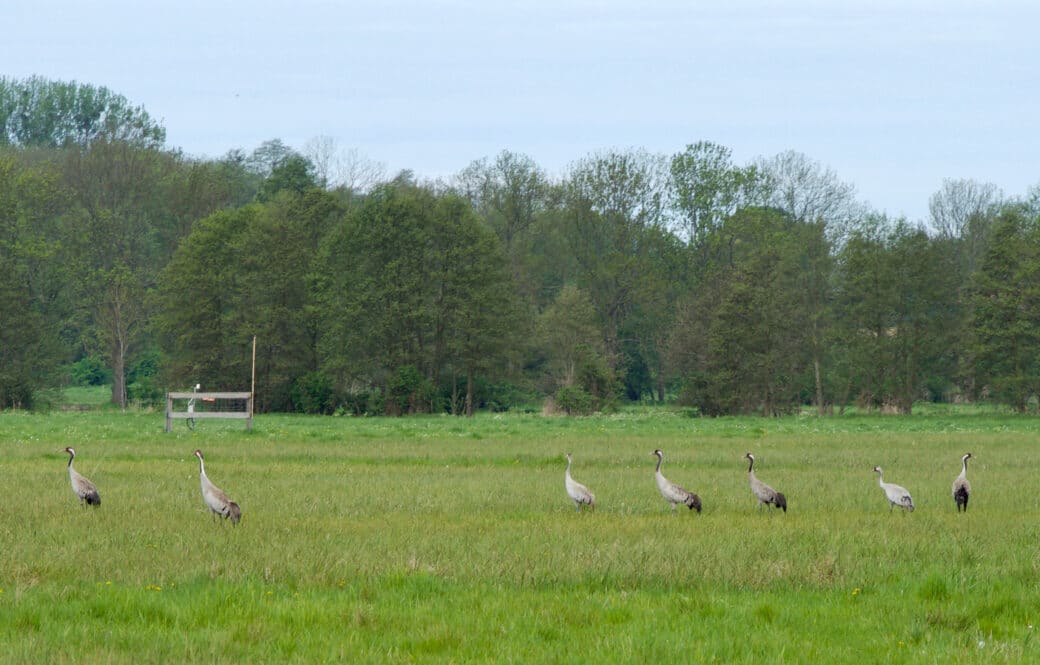The relationships between land use intensity, organismic diversity and acoustic complexity
Soundscape ecology is a newly emerging scientific field. It is a cross-disciplinary approach, combining landscape ecology, psychoacoustics, bioacoustics and acoustic ecology. It aims to understand how sounds from various sources—biological, geophysical and anthropogenic—can be used to understand coupled natural-human dynamics across different spatial and temporal scales.

1. Acoustic diversity serves as a correlate for several different aspects of biodiversity.
2. Acoustic diversity is correlated with land use intensity.
Biodiversity assessments are still one of the biggest challenges that ecologists face to investigate the relationships between land-use intensity and biodiversity (Sueur et al. 2008). The aim within this project is to establish acoustic richness indices as a functional tool to study the correlations between different organismic groups, vegetation structure and their sensitivity to changes in land-use intensity. Recent case studies support the feasibility of such an approach. To achieve this aim we will first validate the acoustic indices and identify which index best describes the different habitats. Then we will investigate the relationship between land-use intensity and acoustic diversity. Land-use change affects plant diversity, vegetation composition and structure (e.g. Herbst et al. 2013). Through various functional links between vegetation structure and the biophony as well the effect of vegetation structure on the geophony, we expect that changes in land-use types will result in detectable changes of the acoustic diversity of a habitat. Applying the concept of soundscape ecology to the unique design of the Biodiversity Exploratories, with multiple levels of land-use intensity, biodiversity and ecosystem type, will allow testing its suitability for detecting consequences of environmental change for biodiversity.
1. Take simultaneous recordings at the three Biodiversity Exploratory sites along the established land-use and biodiversity gradients in both forest and grassland systems (100 EPs per region – total 300 plots). Recorders will be programmed to record for one minute every 10 minutes for a whole year. In this way both daily and seasonal variations can be captured to document various aspects of sonic components (e.g. dominance of birds during dawn choruses in spring, insects during summer).
2. Use the collected data to investigate which organismic groups are captured by acoustic diversity indices. The identity and taxonomic diversity of specific organismic groups will, however, not be derived by these measurements, but will be provided by other projects. In addition, the dataset will allow us to relate different aspects of an ecosystem´s biodiversity and structure, such as plant species diversity, certain aspects of plant functional diversity or canopy architecture to acoustic diversity.
3. Analyse interaction between land-use intensity and acoustic complexity.
Acoustic indices can be derived from the analysis of acoustic frequency patterns, based on one or more aspects of sound (time, frequency or energy). So far acoustic indices have been successfully applied in tropical and temperate forests and could be related to species diversity of birds, anurans and cicadas (Sueur et al. 2008; Farina et al. 2011a; Farina et al. 2011b; Pieretti et al. 2011; Depraetere et al. 2012; Sueur et al. 2012; Gasc et al. 2013a; Gasc et al. 2013b). In a further step, Bormpoudakis et al. (2013) applied acoustic features to differentiate forest and grassland habitats, showing that distinct habitats have distinct sounds which relate to vegetation structure and animal diversity.
The basis of acoustic frequency analysis in ecology relies on the Acoustic Niche Hypothesis (ANH) (Krause 1987), which predicts that animals adjust their signals to minimise interference with other species. The implications arising from this hypothesis are: a) a well-established and recently undisturbed habitat should be characterised by a higher spectrotemporal complexity and signal diversity than a recently disturbed habitat (Gage et al. 2001); b) the loss of species from an “acoustically optimized” habitat should leave detectable gaps within the soundscape (Sueur et al. 2008; Sueur et al. 2012); c) not all frequencies and sound structures (e.g. modulation patterns) should be present in all habitats (Pijanowski et al. 2011).
Bormpoudakis D., Sueur J. & Pantis J.D. (2013). Spatial heterogeneity of ambient sound at the habitat type level: ecological implications and applications. Landscape Ecology, 28, 495-506.
Depraetere M., Pavoine S., Jiguet F., Gasc A., Duvail S. & Sueur J. (2012). Monitoring animal diversity using acoustic indices: Implementation in a temperate woodland. Ecological Indicators, 13, 46-54.
Farina A., Lattanzi E., Malavasi R., Pieretti N. & Piccioli L. (2011a). Avian soundscapes and cognitive landscapes: theory, application and ecological perspectives. Landscape Ecology, 26, 1257-1267.
Farina A., Pieretti N. & Piccioli L. (2011b). The soundscape methodology for long-term bird monitoring: A Mediterranean Europe case-study. Ecological Informatics, 6, 354-363.
Gage S.H., Napoletano B.M. & Cooper M.C. (2001). Assessment of ecosystem biodiversity by acoustic diversity indices. The Journal of the Acoustical Society of America, 109, 2430-2430.
Gasc A., Sueur J., Jiguet F., Devictor V., Grandcolas P., Burrow C., Depraetere M. & Pavoine S. (2013a). Assessing biodiversity with sound: Do acoustic diversity indices reflect phylogenetic and functional diversities of bird communities? Ecological Indicators, 25, 279-287.
Gasc A., Sueur J., Pavoine S., Pellens R. & Grandcolas P. (2013b). Biodiversity Sampling Using a Global Acoustic Approach: Contrasting Sites with Microendemics in New Caledonia. Plos One, 8, e65311.
Herbst C., Wäschke N., Barto E.K., Arnold S., Geuß D., Halboth I., Reschke S., Sänger J., Meiners T. & Obermaier E. (2013). Land use intensification in grasslands: higher trophic levels are more negatively affected than lower trophic levels. Entomologia Experimentalis et Applicata, 147, 269-281.
Krause B.L. (1987). Bio-Acoustics: Habitat Ambience & Ecological Balance Whole Earth Rev, 14-18.
Pieretti N., Farina A. & Morri D. (2011). A new methodology to infer the singing activity of an avian community: The Acoustic Complexity Index (ACI). Ecological Indicators, 11, 868-873.
Pijanowski B.C., Farina A., Gage S.H., Dumyahn S.L. & Krause B.L. (2011). What is soundscape ecology? An introduction and overview of an emerging new science. Landscape Ecology, 26, 1213-1232.
Sueur J., Gasc A, Grandcolas P & S P. (2012). Global estimation of animal diversity using automatic acoustic sensors. In: Sensors for ecology (eds. Le Gaillard JF, Guarini JM & F G). CNRS Paris, pp. 99–117.
Sueur J., Pavoine S., Hamerlynck O. & Duvail S. (2008). Rapid Acoustic Survey for Biodiversity Appraisal. Plos One, 3.









